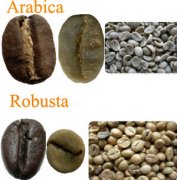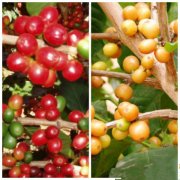Basic knowledge of Fine Coffee Analysis of Acid components in Coffee
The acidity of coffee is usually considered to be related to the quality of coffee. Acidity is typical of high-value coffee in Central America and East Africa. Excessive sour taste is considered to be the disadvantage of coffee. Acidity is related to growing at very high altitudes and mineral-rich volcanic soils.

The acidity of washed beans is higher than that of sun-dried beans. For example, the concentration of sun-dried beans is heavier than that of washed beans, because the concentration obscures the acidity of coffee. The acid substance of coffee beverage is closely related to the degree of baking, as well as the method of baking and brewing. PH of coffee is also related to the acidity of coffee. The pH value of a good cup of coffee should be between 4.9 and 5.2.
Coffee raw beans and roasted beans contain more than 100 acids. Chlorogenic acid and quinic acid are the main acid substances in raw beans, followed by malic acid and limonic acid. Chlorogenic acid complexes are degraded into smaller components during baking, forming components such as acetic acid and formic acid. Because of the high volatility of these ingredients, they disappeared in the subsequent baking stage.
Chlorogenic acid
Chlorogenic acid is actually an ester component between quinic acid and phenols like cinnamic acid. The most common coffee is coffee quinic acid (5-O-caffeoylquinic acid), an ester between quinic acid and caffeic acid. More than 17 different chlorogenic acids have been found in Robusta raw beans, but the amount of chlorogenic acid seems to vary depending on origin and coffee variety.
Caffeic acid
Coffee provides the richest dietary source of chlorogenic acid. According to the report, a cup of 200cc coffee contains 70-350 mg chlorogenic acid and will supply 35-175 mg caffeic acid. The chlorogenic acid in coffee has the effect of maintaining health. Although chlorogenic acid and caffeic acid have antioxidant effects in test tubes, the exact amount of antioxidant activity is unknown because they are widely metabolized in the body, and their metabolites often have lower antioxidant activity than predecessor substances.
Caffeic acid exists not only in coffee, but also in a large number of edible and inedible plants. With antioxidants. On the other hand, current research suggests that caffeic acid may also be a carcinogen. The health benefits of caffeic acid are unknown.
Important Notice :
前街咖啡 FrontStreet Coffee has moved to new addredd:
FrontStreet Coffee Address: 315,Donghua East Road,GuangZhou
Tel:020 38364473
- Prev

Types of coffee beans Robusta coffee beans
Coffee training knowledge: people always habitually look at things in dichotomy, good and bad, good and bad, good and bad. The same is true in the world of coffee. Arabica coffee beans are always classified as good, while its distant relative, Robusta, is often classified as bad. Why is Robusta so notorious? Round in appearance
- Next

Coffee training knowledge chapter on the picking of coffee trees
Coffee trees usually blossom in 3-4 years, about 2-3 months a year, and their appearance and smell are similar to those of jasmine. when they bloom, they grow in clusters on the branches and bloom for 3-5 days. After the flowers bloom, they bear small green fruits, which ripen and turn red into ripe fruits that can be picked after a few months. The skin of ripe fruit is red. Because its shape and color are similar to cherries, ripe coffee fruit is called coffee cherry in many places.
Related
- Beginners will see the "Coffee pull flower" guide!
- What is the difference between ice blog purified milk and ordinary milk coffee?
- Why is the Philippines the largest producer of crops in Liberia?
- For coffee extraction, should the fine powder be retained?
- How does extracted espresso fill pressed powder? How much strength does it take to press the powder?
- How to make jasmine cold extract coffee? Is the jasmine + latte good?
- Will this little toy really make the coffee taste better? How does Lily Drip affect coffee extraction?
- Will the action of slapping the filter cup also affect coffee extraction?
- What's the difference between powder-to-water ratio and powder-to-liquid ratio?
- What is the Ethiopian local species? What does it have to do with Heirloom native species?

